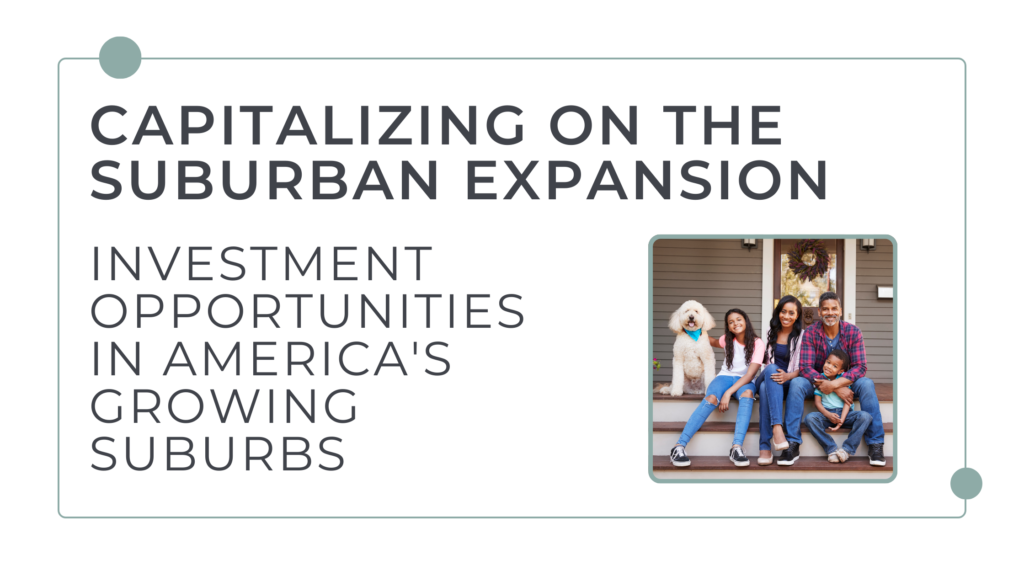As the American demographic landscape continues to evolve, the migration from urban to suburban areas presents unique opportunities for real estate investors. This shift, driven by changing lifestyles and the rise of remote work, has led to a marked increase in the attractiveness of suburban real estate, making now a prime time to consider investment strategies that capitalize on these trends.
Understanding Migration Patterns
Recent data shows a significant movement of populations from dense metropolitan areas to suburban and exurban regions. This shift is partly due to the increased flexibility of remote work and a growing preference for more spacious and affordable living outside of urban cores. States like Texas and Idaho are witnessing considerable population growth, with cities like Boise and Dallas experiencing an influx of young professionals attracted by robust job markets and a higher quality of life (Census.gov) (Extra Space).
Emerging Suburban Hotspots
Suburban areas around major cities are transforming into hotspots for real estate investment. These regions offer the dual benefits of more affordable property prices and increasing demand for residential spaces. For example, areas around Dallas and Phoenix are seeing significant growth due to their economic vitality and attractive living conditions, making them ideal for investment in both residential and commercial properties (Brookings).
Development Potential in Growing Suburbs
With the influx of new residents, suburbs are ripe for property development projects. Investors have opportunities to build or renovate residential units tailored to the needs of a diverse new population seeking the amenities of urban living in a suburban setting. The ongoing population growth in these areas supports a strong rental market, particularly for properties that cater to families and remote workers looking for functional home office spaces (Census.gov) (Extra Space).
Case Studies of Successful Investments
Real-world examples underscore the potential for substantial returns on investments in suburban real estate. Investors who have focused on emerging markets and adapted to demographic trends have seen profitable outcomes, especially in regions where the demand for housing continues to outstrip supply. These success stories highlight the importance of strategic selection of locations and property types that align with shifting population dynamics (TenantCloud).
Navigating Risks in High-Growth Areas
While the prospects are attractive, investing in high-growth suburban areas also comes with risks, such as potential over-saturation of the market or shifts in economic conditions that could affect property values. Conducting thorough market analysis and staying informed about local economic indicators are crucial for mitigating these risks and making informed investment decisions.
Conclusion
The suburban shift is more than just a temporary trend; it’s a fundamental change in the American living and working landscape that offers substantial opportunities for savvy real estate investors. By understanding the underlying factors driving this shift and identifying emerging hotspots, investors can strategically position their portfolios to capitalize on the growth of suburban markets.
For those ready to explore these opportunities, Ridge Lending Group is here to help. Visit us at RidgeLendingGroup.comor call us at 1-855-747-4343 to start your application and tap into expert advice on building a successful real estate investment portfolio in America’s burgeoning suburban markets.


